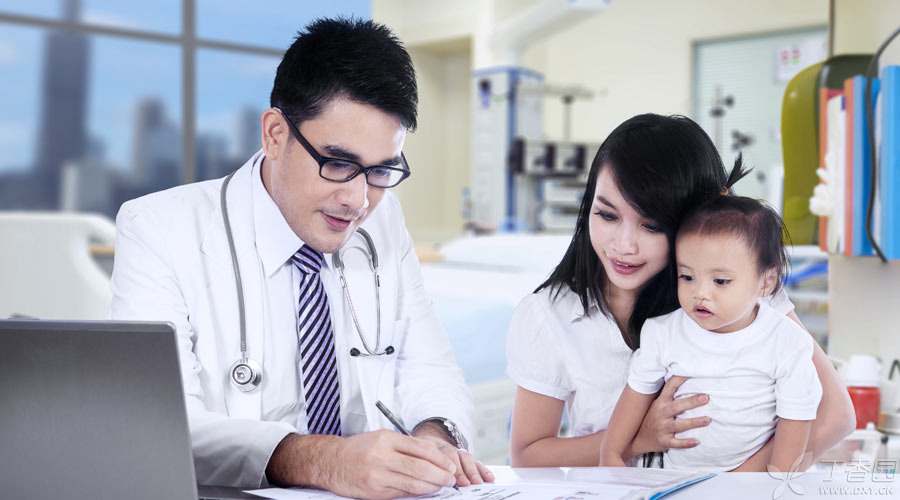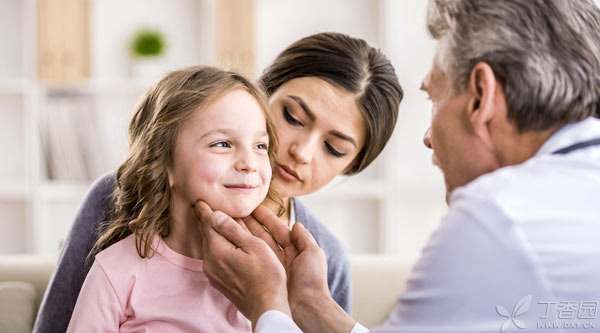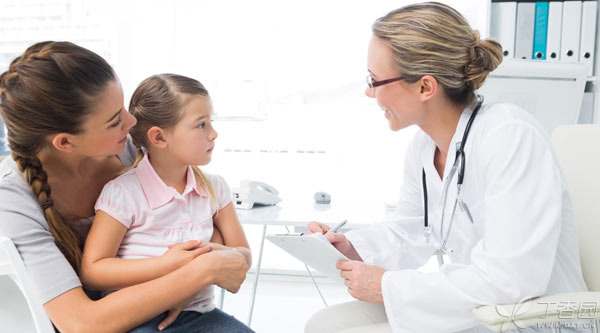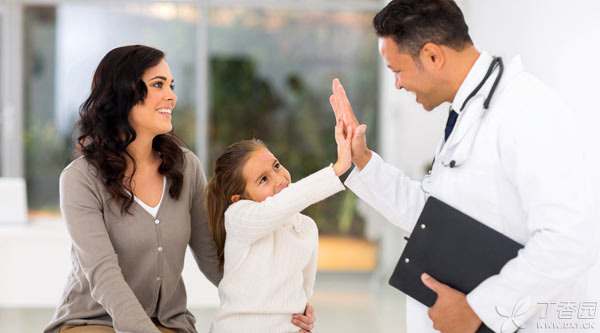
It is an art for doctors to diagnose and treat diseases, and it is also an art for parents to take their children to see a doctor.
Parents are always looking forward to seeing a doctor as soon as possible, and also hope that doctors can listen more to themselves about their children. However, the time for medical treatment is limited. How can effective contents be conveyed to doctors as soon as possible to avoid useless information? Parents who take their children to see a doctor need to know the following knowledge.
First, under the age of 18 to find pediatrics
In China, there are different views on how to see a doctor for a [half-old] child aged 14-18. Some hospitals stipulate that children’s numbers should be hung under the age of 18 and adults’ numbers should be hung over the age of 18. However, some hospitals believe that they can go to the adult department at the age of 14.
From a medical point of view, although children aged 14-18 are physically close to adults, their physical development has not yet reached the standard of adults, and their psychological age is not mature, so they still belong to children.
In addition, even for the same disease, children and adults often have great differences in treatment plans. In addition to the characteristics of the disease itself, the growth and development of children will also be taken into account.
Second, communicate before seeing a doctor.
Some children will cry and refuse to cooperate when they hear that they are going to the hospital or see doctors and nurses.
Before seeing a doctor, parents should communicate well with their children. At this time, parents should not force their children too much, because their children are already very uncomfortable due to illness. Suddenly they come to a strange environment, meet strangers, and have [terrible] white coats. Naturally, they are extremely anxious. Parents need patience and understanding.

Three, these things should be taken well
Parents need to prepare the following items when taking their children to see a doctor for the second time:
- If the child has lived in the hospital, he should bring the disease diagnosis certificate, examination form, laboratory examination form, discharge summary and disease examination form.
Especially for children referred from lower-level hospitals to higher-level hospitals, parents can take these with them to help doctors make diagnosis as soon as possible and avoid repeated examinations.
Parents should keep their children’s medical records after each visit, which record their children’s medical history information. In addition, they should leave enough money for registration so as not to find that they have no money and have to queue up again when it is their turn to queue up.
Four, age and weight clearly stated
When seeing a doctor, be sure to tell the doctor the age of the child, such as several years and months.
- Children less than one month old: accurate to the number of days the child is born, even hours and minutes. Children from the age of three to before primary school: preferably accurate to the month, the age is one year old
Different ages have different common diseases, Accurate description of age is of great significance for doctors to judge diseases. For example, respiratory and intestinal diseases are common in children under two years old. Doctors will focus on cough, runny nose, nasal congestion and other respiratory symptoms or gastrointestinal symptoms such as diarrhea. However, 7-year-old children have less diarrhea and more tonsillitis, so doctors will ask for respiratory symptoms such as sore throat.
In addition, parents had better provide doctors with the weight information of their children, which is helpful for doctors to decide the dosage of drugs.
Five, don’t hide the history of the disease
Parents should also tell doctors about their children’s past illness.
For example, whether there is convulsion when fever occurs. If children between the ages of half and five have cramps when fever occurs, doctors will advise parents to use convulsion prevention drugs.
In addition, if children have kidney diseases, congenital heart diseases, bronchial asthma and other diseases, parents should tell doctors. For example, children with chronic kidney disease have caught a cold, and doctors will give them drugs that are non-toxic or less toxic to the kidney when prescribing drugs.
At the same time, if the child is allergic to certain foods or drugs, he must tell the doctor.
Six, describe the disease is very important
If the child has a fever, it is necessary to specify when and how long the disease will occur. Some diseases even need to be accurate to minutes, such as convulsion. The duration is different and the treatment is different.
Some parents keep repeating when describing their children’s fever, which is not helpful to the doctor’s diagnosis and treatment. The correct approach is to tell the doctor the highest temperature of the child’s fever, take what antipyretic, and take the situation after taking it.

Seven, diarrhea baby first take stool
Diarrhea is a common disease of children. Fecal examination is very important when diarrhea occurs. Through fecal examination, the cause of diarrhea in children can be generally understood.
When children have diarrhea, they can take some stool specimens and put them in fresh-keeping bags or disposable paper cups before coming to the hospital. Within 2 hours, stool that has not been contaminated by the outside world can be used for examination.
For infants, parents should not carry diapers for examination. Because diapers have strong absorption, they will absorb formed components such as white blood cells and red blood cells in stool, which may lead to false negative and affect examination and diagnosis.
Eight, follow-up follow-up is very important
Pediatrics is also called “dumb department” because doctors mostly face children who cannot accurately describe their illness.
However, children’s illness often changes rapidly. For example, the body temperature measured half an hour ago was only 37.6 ℃, which may rise to 40 ℃ now.
When the child sees a doctor for the first time, the doctor will give diagnosis and treatment opinions according to the child’s condition and test results. However, the doctor’s treatment is not a “one-shot deal”. When the child’s condition worsens, he needs to see a doctor again in time.
How to judge the aggravation of the disease?
The simplest method is that the child’s original symptoms are not relieved or even worse, and new problems may occur.
For example, the child’s body temperature is 38.5 ℃ when he starts to have fever, and occasionally coughs. After treatment, the body temperature does not drop but rises, the cough worsens, and symptoms such as wheezing, vomiting and abdominal pain also occur.
In addition, the child’s mental, diet and sleep conditions are also the basis for judging the disease condition.

As soon as the child gets sick, the whole family is mobilized. As long as parents and children can fully prepare for the doctor, trust and cooperate with doctors, the chances of overcoming the disease will be greatly improved.
Responsible Editor: BruceLi
